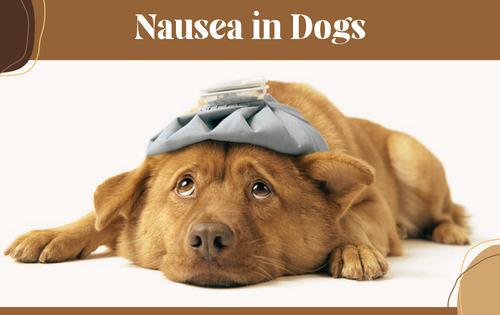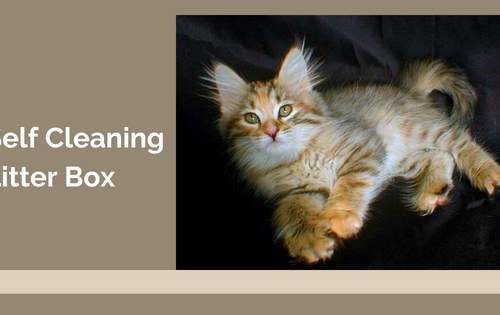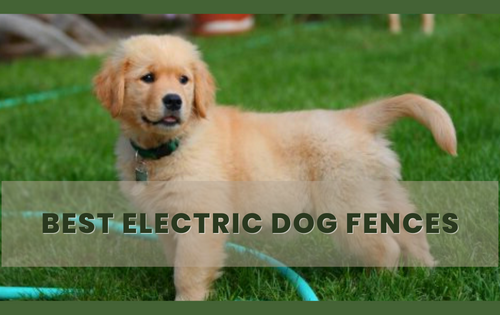Pets
How to Tell if Your Dog is Nauseous
Nausea in dogs can be a distressing experience for both pets and their owners. Just like in humans, dogs can feel nauseous due to various reasons, such as consuming something toxic, gastrointestinal issues, or even being car sick. As a responsible pet owner, it is crucial that you recognize the signs of nausea in your dog to provide them with proper care and prevent potentially serious health conditions. If you’re wondering “how to tell if my dog is nauseous?”, here are some of the most common symptoms you should look out for.
Vomiting and Regurgitation
One of the most apparent indicators of nausea in dogs is vomiting or regurgitation. Vomiting involves the forceful ejection of stomach contents through the mouth, while regurgitation is more of a passive release of undigested food from the esophagus. If your dog has been vomiting frequently and showing signs of discomfort, it might be an indication of nausea. Keep in mind that occasional vomiting may not always be a cause for concern, but frequent vomiting warrants a visit to the vet to determine the underlying cause.
Lethargy and Weakness
When a dog is nauseous, they may become lethargic or weak due to a lack of appetite, dehydration, or discomfort. Suppose you notice that your dog is much more tired than usual and exhibits a general lack of interest in their usual activities. In that case, it could be a sign that they’re experiencing nausea.
Excessive Salivation
Nausea can cause excessive salivation in dogs, leading to drooling. If you notice an unusual amount of drooling accompanied by other symptoms such as vomiting or loss of appetite, it could be a sign of nausea.
Loss of Appetite
A nauseous dog may show a decreased appetite or even an inability to keep food down. If your dog is refusing to eat, especially if they’re usually very enthusiastic about their meals, it’s essential to monitor them for signs of nausea and consult your veterinarian.
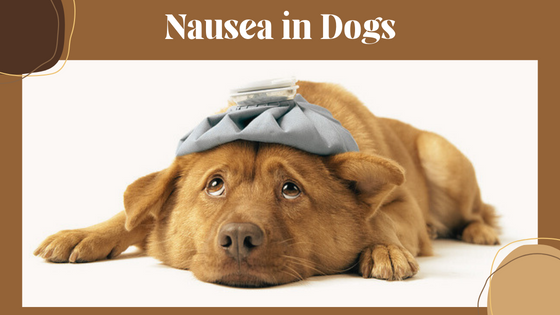
Lip-smacking or Gagging
Dogs experiencing nausea may try to alleviate their discomfort by lip-smacking, swallowing repeatedly, or gagging. If you observe your dog engaging in these behaviors, particularly in conjunction with other symptoms, it could be a sign of nausea.
Whining and Restlessness
Nausea can cause discomfort in dogs, resulting in whining, pacing, or restlessness. Pay attention to your dog’s body language and vocal cues to determine whether they’re experiencing nausea.
Unusual Body Postures
A nauseous dog may exhibit specific body postures, such as an elongated neck or hunched back, or stand with their head hanging low. These positions might help your dog feel more comfortable while combating their nausea but can also be a sign that they’re not feeling well.
What to Do If Your Dog is Nauseous
If you suspect that your dog is experiencing nausea, it’s essential to visit the veterinarian as soon as possible to determine the underlying cause. The vet may recommend a specific treatment plan depending on the cause of your dog’s nausea, such as dietary changes, medication, or even hospitalization for severe cases.
In the meantime, you can help your nauseous dog by providing a quiet and comfortable environment to rest. Keep your dog hydrated by offering them small amounts of water and avoiding any food until they have stopped vomiting.
Conclusion
Recognizing the signs of nausea in your dog is vital for their well-being and health. Paying close attention to their behavior, appearance, and appetite will help you determine whether they’re experiencing nausea or other health issues. Always consult with your veterinarian for professional advice and treatment if you suspect your dog is nauseous.
Say Goodbye to Manual Litter Box Cleaning
Are you fed up with scooping out the litter box? An automatic litter box could be the solution you are looking for. It is a self-cleaning litter box that takes the chore out of cleaning your cat’s litter box.
What is an Automatic Litter Box?
An automatic litter box is a self-cleaning litter box that uses a motorized rake to sift through the used litter and deposit it into a sealed waste receptacle. The litter is then automatically replaced with clean litter, ensuring that your cat’s litter box is always clean and odor-free.
Benefits of an Automatic Litter Box
The main benefit of an automatic litter box is the convenience it provides. You no longer have to scoop out the litter box manually. In addition, the waste receptacle is sealed, which helps to eliminate odors. The motorized rake also ensures that the litter is sifted thoroughly, which helps to keep your cat’s litter box clean.
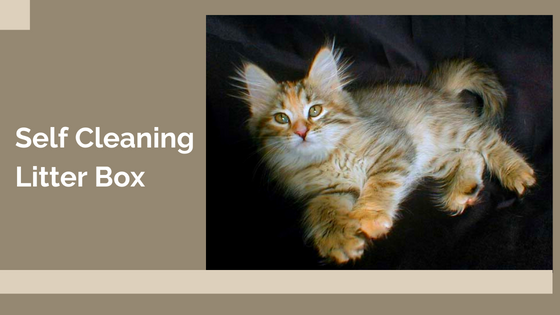
Types of Automatic Litter Boxes
There are several different types of automatic litter boxes available on the market. The most common type is the self-cleaning litter box, which uses a motorized rake to sift through the used litter and deposit it into a sealed waste receptacle. Other types of automatic litter boxes include the self-flushing litter box, which uses a flushing system to clean the litter, and the self-washing litter box, which uses a washable litter mat to collect and clean the litter.
Considerations When Choosing an Automatic Litter Box
If you are looking to buy automatic litter box, it is important to consider your cat’s size and habits. Some automatic litter boxes are designed specifically for larger cats, while others are designed for smaller cats. In addition, you should consider the type of litter your cat prefers, as some automatic litter boxes are designed to work with specific types of litter. Lastly, you should consider the size of the automatic litter box and make sure it will fit in the designated space.
Conclusion
An automatic litter box can be a great way to make litter box cleaning easier and more convenient. When choosing an automatic litter box, it is important to consider your cat’s size and habits, the type of litter your cat prefers, and the size of the automatic litter box. With the right automatic litter box, you can say goodbye to manual litter box cleaning.
Keep Your Furry Friend Close and Safe With GPS Dog Collars
GPS dog collars are a great way to keep track of your canine companion. With a GPS collar, you can have peace of mind wherever your pup may be, allowing you to rest assured that your best friend is safe and sound.
What is a GPS Wireless Dog Fence?
A GPS Wireless Dog Fence is a containment system that uses GPS technology to create an invisible boundary around your property. The boundary is set up using a GPS transmitter and receiver. The transmitter sends out a signal that is picked up by the receiver, which is attached to your pet’s collar. When your pet gets close to the boundary, the receiver will emit a warning sound, prompting your pet to stay within the boundary.
Benefits of a GPS Wireless Dog Fence
The main benefit of a GPS wireless dog fence is that it provides peace of mind knowing your pet is secure. It also eliminates the need for a physical fence, which can be expensive and time consuming to install. Additionally, it eliminates the need for a traditional in-ground fence, which can be difficult to maintain. With a GPS wireless dog fence, you can easily monitor your pet’s location and make sure they stay safe.

GPS Dog Collars
GPS dog collars offer a variety of benefits for owners and their canine companions. By having the ability to track your pup’s location, you can feel secure that your dog is where it should be. Additionally, a GPS collar can help you locate your pup if it ever gets lost. You can also use a GPS collar to set boundaries for your pup and receive alerts when they go out of the designated area.
What Features Should I look For in a GPS Dog Collar?
When shopping for a GPS dog collar geofence system, there are several features to consider. Battery life is an important factor, as you want your collar to last as long as possible. Additionally, it is wise to look for a collar with a waterproof design, as this will ensure it is durable and reliable. Finally, you will want to find a collar that is easy to use and has a long-range signal.
In Conclusion
A GPS dog collar geofence system is an excellent way to ensure your pup stays safe. This technology allows you to track your pet’s location and set boundaries for them, so you always know where they are. Additionally, it provides peace of mind in case of an emergency or if they get lost.
GPS Dog Collar Fence
The GPS dog fence is a kind of electronic fence which can be used to train pets. It’s a system that uses a collar or other device attached to an animal, and a base unit or remote control that sends out signals. The collar then sends a signal back to the base unit, and when the pet strays too far from the pre-defined area, an audible warning sounds, or in some cases, an electric shock is administered.
This system is useful for people who have large yards or live in rural areas where there are no fences or where fencing is not practical. It can also help prevent pets from wandering off into dangerous situations like busy streets or construction sites.
The GPS dog fence has many benefits over traditional fencing methods: it allows you to set up invisible barriers for your pet anywhere in your yard; you don’t have to worry about digging holes or putting up post-and-rail fencing; it reduces the amount of work required on your part; and it doesn’t rely on your pet being able to understand verbal commands (although some people still use voice prompts along with their electronic fences).

The GPS dog collar fence is a great option for pet owners who don’t have time to train their dogs. It allows them to set up invisible barriers anywhere in their yard, and they can be confident that their pets will stay within those boundaries.
How To Install GPS Dog Fence
A GPS dog fence can be installed in a matter of hours. The first step is to measure your yard, including any obstacles that might be in the way. You’ll need this information so you can buy the correct length of wire for your installation. The next step is to stake out where you want the boundary line to be (using flags or other markers). Then place posts every 50 feet along that line, using concrete if possible (so they won’t move). Then connect the wires between each post using connectors. The final step is to connect the wires to the transmitter and run it around your yard. You should also test your system by walking your dog around the perimeter of your yard while holding onto one end of the wire. Once you’ve done this, you’re ready to go!
Conclusion
While it’s not a difficult project, installing an electric fence will take some time and requires attention to detail. If you’re looking for a way to keep your pet in the yard without having to keep them on a leash or constantly watching them, then an electric fence may be just what you need!
Online Dog Training Benefits
Online dog training courses are an excellent way to brush up on your skills and keep up to date with the latest in dog training and behavior. The beauty of online courses is that you can do them at your own pace, whether that be in one sitting or over a period of weeks or months.
Online dog training courses offer lots of advantages:
You can work on your own schedule. If you have a busy schedule, it’s hard to find time to go to classes or meet with trainers. With online courses, you can learn at any time of day or night and at your own pace. You don’t need to worry about missing class because of work or other commitments.
You can save money. Online classes tend to be less expensive than live classes, especially if you don’t need hands-on instruction from an instructor (which most online classes don’t require).

You get more bang for your buck. Most online training programs include videos and other multimedia resources that allow you to see how techniques are done before trying them out with your own pet. This helps you avoid making mistakes and allows you to see what works best for your dog’s personality and temperament. Plus, you can review the materials any time you like!
You can stay at home. Online training classes are usually conducted over the Internet, which means that you don’t have to leave your house in order to get certified. This is especially helpful if your schedule doesn’t allow a lot of flexibility.
K9 Training Institute Online Dog Training offers a variety of online training programs that allow you to get certified without having to go through the hassle of traveling. You can even take advantage of the free trial period and try out one of our classes before making an investment. Online training classes are convenient. If you’re a busy person, then you’ll love the convenience that comes with taking an online class. You can take it at your own pace and review any materials as often as needed. Plus, if you have questions about anything in particular, there’s always someone on hand to help out via email or phone call.
Cutting Your Dogs’ Nails
Cutting your dog’s nails is not a fun thing to do. It is an incredibly important aspect for their health and happiness though. Not cutting their nails can cause them too grow out too far and eventually curve back into their soft paw. That is obviously not a good thing. It will cause each step to hurt and limit their ability to move. It is still a daunting task though. Getting a little information should make it much easier.
The first thing you should know is when to cut their nails. The definite warning is when their nails make little clicking noises every time they walk. Dog nails should not reach below their paw. If you hear the clicking noise, get ready to trim them. You shouldn’t wait until this moment though. Your best method is to trim them regularly. Try to do it about once a week. The quick in the nail grows with the actual nail. If you trim the nail regularly, it will recede and stay at a reasonable level. This makes future trimming easier.
You should make sure you have the necessary tools. Buy a good pair of nail trimmers and prepare some form of styptic powder or pen in case you nick their quick. That’s the only real issue in grooming their nails. If you take a long forward cut, it will cut the quick and really hurt. It isn’t a big deal overall. If you do cause bleeding, just cleanse the area with some warm water and a cloth. Then use the styptic powder to stop the blood flow. It will heal in a little bit. The quick of the nail isn’t too hard to spot. If they have light nails, you will be able to see it. The quick is a bit darker and near the base of the nail. You should be able to spot it in most dogs. Of course, it is always better to take your dog to a professional dog grooming Altamonte Springs salon than doing it yourself.
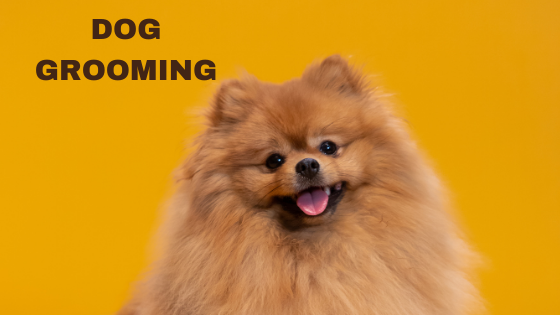
If you can’t spot the quick, don’t fret. Just use careful, thin cuts on the nail. As you trim, keep an eye on the center of the nail. The dead center of the nail will get progressively darker as it nears the cut. Stop once you see the dark spot in the center.
How do you actually trim their nails? Well, it’s not too hard if they’ll cooperate. Just sit down in a comfortable spot and hold them. If they’re a small dog, you can put them on your lap. Otherwise just sit down and hold their paw comfortably, but in a firm manner. You can get someone else to hold them if you don’t think you can manage it with one hand. After they’re secure, just look at the nail and spot the quick as described above. Then slide the clippers up the nail and tilt them to a 45 degree angle. This will ensure that you don’t cut off too much with a flat cut. Take small, manageable cuts until the nail is no longer past their toe or until you reach the quick. It is possible that the nail may be too brittle for cutting easily. If it’s brittle, it may split or splinter a bit. If this happens, grab a nail file and smooth the edge to it’s normal shape.
If your dog doesn’t cooperate, then don’t force them. It shouldn’t be a torturous event for them. Just take a break and come back later once they’ve calmed down. Use petting to relax them if necessary.
These are the basics of cutting your dog’s nails. It isn’t a lot of fun, but it has to be done.
Unique Dog Names
Speaking about unique dog names it’s necessary to say that this dog name category is a perfect choice for those dog owners who want their dogs to have unique, original, unlike any other already existing, name. If people name their children with unusual and even extraordinary names, why can’t we name your pets the same way?
Look closely at your dog, study its behavior and personality, because it’s one of the best sources for inspiration. There is a great variety of dog names and very often it’s difficult not to get lost in it. Fortunately you’ve already defined an appropriate for you category.
Let’s talk about some sources of unique dog names. It’s a nice idea to combine several dog names, people names or nicknames which characterize your dog and have a perfect meaningful and unique name for your pet. Do take into account your dogs size and color. There is a tendency among dog lovers to create dog names by putting together nonsense syllables or nonsense words.
You can also use surnames of the members of your family, your dog’s origin, favorite things and so on.
Another good source for your inspirations is nothing else but your hobbies. In case you like gardening and know much about this occupation, think of flowers or any other plant. You may choose exotic plants, fast grower plants, evergreen plants, perennial plants and submarine plants to find a name for your dog which will characterize certain features of your pet. Maybe you are a car fanatic. Why not show it in your dog’s name. There are a lot of car dog names to choose from. Here you’ll have a great number of interesting variants.

It’s a nice idea to search for some interesting and exotic names within other languages. Choose not only some names you like but do pay attention to their meaning. For example, if your dog behaves as an indisputable leader and is always at the center of attention, you may call it Kabuki (Japanese theatrical drama). Of course such exotic names will sound a bit strange and unusual but at the same time these dog names are very attractive and make people guess their possible meaning provoking different associations.
Have you ever thought about food and drinks? In case you haven’t you should try. For example, Espresso is a perfect name for a black solid dog, Candy is a perfect name for any dog that everyday makes her owner’s life sweet and so on.
In case you want not only to stress your creativity but also your dog’s originality choose such name as Rona. Rona is an unique small Scottish Island with only one dweller. Do create original and memorable name!
It’s necessary to say that it would be useful for you to read such articles as choosing a dog name and naming tips because they will help you to do everything right and avoid common mistakes people usually make naming their dogs.
Information on Guinea Pigs Food
Guinea pigs are generally herbivores. They don’t eat meat and their diet mainly consists of plant materials. You will not spend too much on their food especially if you have your own vegetable garden.
One characteristic of Guinea Pigs which is similar to humans is the inability of their body to produce Vitamin C. Without it, they will suffer from scurvy and other similar conditions. That is why they need a steady supply of food rich in vitamin C in their diet. This can come from fresh vegetables, fruits, grass and pellets supplement enriched with Vitamin C. Celery especially its greens are also an excellent source of this vitamin. So to answer the question is celery safe for guinea pigs, the answer is definitely, yes.
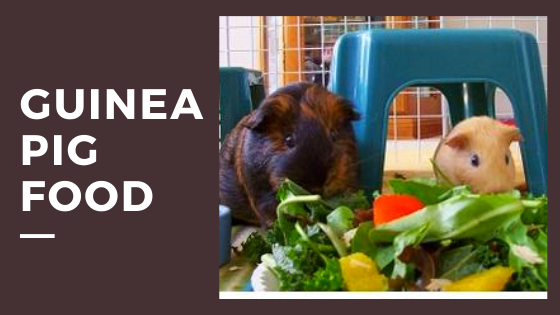
If you are a Guinea Pig lover and you have several of them, it is important for you to know what foods are suitable and not suitable for them.
Additionally, there are a lot of available resources in the Internet that can guide you in caring for your pet. Don’t just believe what other people say because they may be telling you something which has no proof or is based on outdated information. In fact, some pet owners say that Guinea Pigs cannot eat celery. Can Guinea Pigs Eat Celery? You will never know for sure unless you read some reliable sources online. And yes, Guinea Pigs can eat celery.

